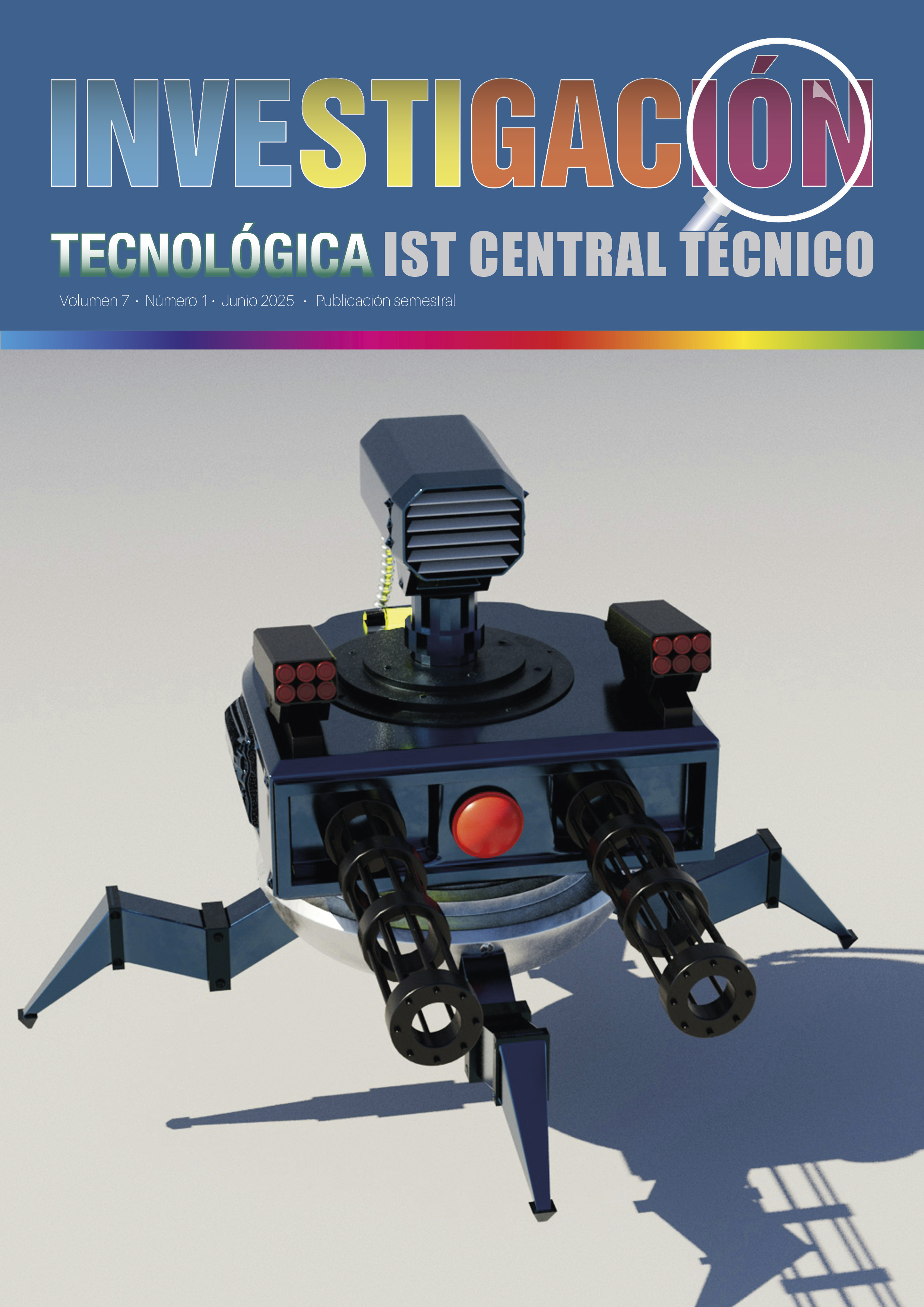EL ANALYSIS OF THE TECHNICAL CHARACTERISTICS FOR THE DESIGN OF THE FRAME OF AN ELECTRIC GO KART
Keywords:
Electric go-kart; Steering system; Computational simulation; Structural analysis; Finite Element Method (FEM)Abstract
This study explores the development, analysis and optimization of the steering system of an electric go-kart, using advanced computational simulation tools. The steering is a key element for the maneuverability and stability of the vehicle, so its design must guarantee an accurate and safe operation. To this end, a detailed analysis was carried out to evaluate its structural performance and ensure its reliability under different conditions of use. The methodological approach included the creation of a three-dimensional model in SolidWorks, the generation of a refined mesh with tetrahedral elements and the simulation of loads representative of real scenarios. Essential parameters such as draft angle (35°), departure angle (11°), positive camber (1°) and caster (18°) were examined, verifying that the geometric configuration complies with safety and stability standards. The results showed that the maximum stress of 3.64 MPa is considerably lower than the elastic limit of the material (6.2 MPa), eliminating the risk of structural failure. In addition, the total deformation recorded was 9.814 mm, concentrating in the flywheel area without compromising the integrity of the system. The safety factor obtained, higher than 2, supports the robustness and reliability of the proposed design. These findings reaffirm the feasibility of the design and highlight the crucial role of computational simulation in the optimization of vehicle components. The research confirms that the developed steering system is not only efficient and safe, but also has the potential to be applied in electric racing go-karts. Future studies may focus on experimental testing and design optimization through the use of new materials and geometric adjustments to further improve its performance.
References
Abhiteja, P., Kumar, K. S., Krishna, K. S., & Kumar, Y. A. (2019). Design, simulation of steering system for a go kart vehicle. AIP Conference Proceedings,
Anjikar, A., & Gurway, S. (2024). A compressive approach in design and analysis of GO-KART. In Recent Advances in Materials Manufacturing and Machine Learning (pp. 367-378). CRC Press. https://doi.org/10.1201/9781003450252-44
Dere, A. A., Singh, M., Thakan, A., Kumar, R., & Singh, H. (2021). Design optimization of go-kart chassis frame using modal analysis. Lecture Notes in Mechanical Engineering,
Karthi Vinith, K. S., & Sathiamurthi, P. (2020). Design and fabrication of adaptive spoiler for go-kart vehicles [Article]. International Journal of Scientific and Technology Research, 9(3), 2044-2049. https://www.scopus.com/inward/record.uri?eid=2-s2.0-85082516659&partnerID=40&md5=baaeef862947aec240de2cb85e172440
Krishnamoorthi, S., Prabhu, L., Shadan, M. D., Raj, H., & Akram, N. (2020). Design and analysis of electric Go-Kart. Materials Today: Proceedings,
Mirone, G. (2010). Multi-body elastic simulation of a go-kart: Correlation between frame stiffness and dynamic performance [Article]. International Journal of Automotive Technology, 11(4), 461-469. https://doi.org/10.1007/s12239-010-0057-6
Rawat, K., Kumar, D., Kumar, R., Bharadwaj, D., Soti, V., Rathore, G., Biswas, D., & Singh, P. (2023). Structural optimisation of go kart chassis with basic electronic driver assistance systems. 2023 2nd International Conference on Paradigm Shifts in Communications Embedded Systems, Machine Learning and Signal Processing, PCEMS 2023,
Razak, M. S. A., Ahmad, F., Hasan, M. H. C., & Jamaluddin, H. (2023). Dynamic Testing of In-Wheel Motor Based Electric Vehicle in Longitudinal Direction [Article]. International Journal of Automotive and Mechanical Engineering, 20(3), 10574-10594. https://doi.org/10.15282/ijame.20.3.2023.02.0816
Srivastava, J. P., Suryateja, K., Kumar, P., Gangadhar Reddy, G., Moizuddin, M., Kumar, S., & Jain, A. K. (2024). Influence of Track Width, Wheel Base on Turning Radius and Static Behavior of Stub Axle, C-Clamp in Go-Karts Steering System. Lecture Notes in Mechanical Engineering,
Wu, C. H., Lin, W. C., & Wang, K. S. (2020). Mechatronics and remote driving control of the drive-by-wire for a go kart [Article]. Sensors (Switzerland), 20(4), Article 1216. https://doi.org/10.3390/s20041216
Yuvaraaj Kumar, S., Srivarshani, P., Nitin Sanjeeth, S. V., & Sudhakar, M. (2024). Design and Optimization of the Steering System in Go-Kart. SAE Technical Papers,

Downloads
Published
How to Cite
Issue
Section
License
Copyright (c) 2025 Milton Bautista

This work is licensed under a Creative Commons Attribution-NonCommercial 4.0 International License.
COPYRIGHT
The ISTCT Technological Research journal is an Open Access publication, whose contents are disseminated under a Creative Commons Attribution-Non-Commercial license (CC-BY NC 4.0 International). All articles published in the ISTCT Technological Research journal are published in Open Access and are available online for free immediately after publication.
This journal provides metadata for third-party indexing services through the open files initiative.
The ISTCT Technological Research journal recognizes and respects the moral rights of the authors, as well as the ownership of the patrimonial right, which will be transferred non-exclusively to the journal to allow its legal dissemination in Open Access.
The ISTCT Technological Research journal does not reserve the rights to publish articles. Authors may distribute their own material in any other medium or medium, as long as it is for non-commercial purposes, informing the editors that the work will be published again and giving the corresponding credit to the ISTCT Technological Research journal.
Authors can make other independent and additional contractual agreements for the distribution of the article published in this journal (e.g., include it in an institutional repository or publish it in a book) as long as they clearly indicate that the work was published for the first time in "ISTCT Technological Research Magazine". In the case of reproduction, a note similar to the following must be included:
"This text was originally published in REVISTA DE INVESTIGACIÓN TECNOLÓGICA ISTCT N ° -, section -----, number of pages, year of publication."
Authors are recommended to publish their work on the Internet (for example on institutional or personal pages) in the final version published by REVISTA DE INVESTIGACIÓN TECNOLÓGICA ISTCT, as it may lead to a greater and faster dissemination of the published work (see The Effect of Open Access).
The publications in this magazine, due to their free nature, do not entitle the authors to any financial remuneration.


